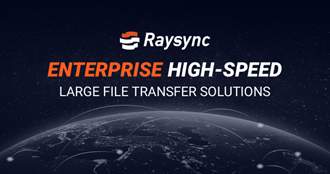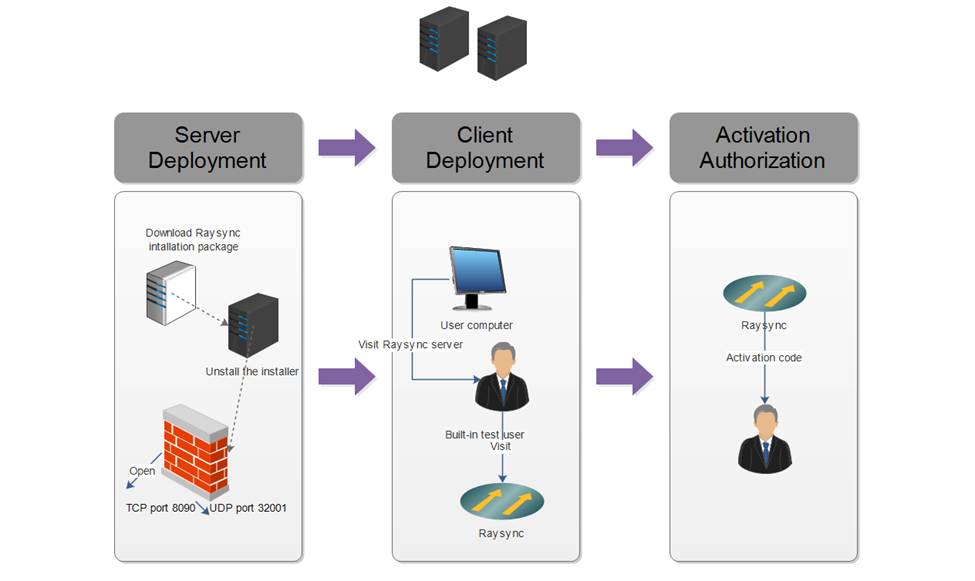In the medical industry, where human life and well-being are at stake, the accuracy and efficiency of data transfer are of paramount importance. With advancing medical technologies, the volume of medical data is growing exponentially, posing significant challenges in terms of efficient and secure data transfer.
Part 1: Current Status of Medical Data Transfer
In the medical industry, data transfer involves multiple stages that require not only high speed and stability but also ensure data security and privacy protection.
Massive data volume: Medical imaging, electronic health records, and genetic data all need to be transmitted, resulting in a huge amount of data. During peak hours, when hundreds of outpatients and clinical doctors simultaneously review image files and access data, concurrent access to storage systems can lead to performance degradation, causing delays in reading and writing, directly impacting the efficiency of medical professionals.
High-speed transfer requirements: High-speed transfer is needed between medical devices and between hospitals and data centers for real-time data sharing and processing. However, existing data transfer technologies struggle to meet the high-speed transfer needs of the medical industry.
Strict data security requirements: Traditional data transfer methods struggle to ensure the security of medical data, as medical data involves patient privacy that must be safeguarded during transfer.
High stability requirements: Medical devices must operate without interruption, necessitating stable and reliable data transfer. However, interruptions or errors commonly occur in data transfer due to network fluctuations and other reasons.
High costs: To meet the requirements, significant investments in technology upgrades and network optimization are required, resulting in high costs.
Part 2: Raysync – an efficient, secure, and stable data transfer solution
High-speed and stable data transfer: Advanced data transfer protocols and optimized algorithms can achieve high-speed and stable data transfer. Whether in a local area network or wide area network, Raysync ensures the stability and reliability of data transfer. High-speed and stable data transfer enables faster processing of medical data, improving the efficiency of healthcare professionals. Doctors can access patient medical images, electronic health records, and other information more quickly, enabling faster diagnosis and treatment planning.
Robust data encryption technology: Employing internationally advanced encryption algorithms such as TLS 1.3, data can be encrypted during transfer. Strong data encryption technology ensures the security of medical data during transfer, preventing data breaches and hacker attacks. This helps protect patient privacy and maintain the reputation of healthcare institutions. Additionally, Raysync with HIPPA Compliance supports various encryption protocols, allowing for the selection of appropriate encryption methods based on different scenarios. By improving efficiency and enhancing data security, healthcare providers can offer higher quality and more accurate medical services. This, in turn, enhances patient satisfaction, trust, and ultimately elevates the reputation and competitiveness of healthcare organizations.
Intelligent management interface: Provides users with a user-friendly interface to manage and monitor data transfer. Users can view real-time information such as transfer status, speed, and errors, as well as perform operations such as data backup and recovery.
Cost reduction: By optimizing the data transfer process and reducing network bandwidth costs, Raysync transfer can effectively reduce operational costs for healthcare institutions.
Robust fault tolerance mechanism: Raysync has a robust fault tolerance mechanism that automatically recovers data transfer in the event of network fluctuations or device failures. This ensures that medical devices are not affected by interruptions in data transfer during operation.
Scalability: Supports various data types and formats, enabling flexible scalability to meet the growing data transfer needs of the healthcare industry.
Seamless integration: Raysync seamlessly integrates with other healthcare information systems, allowing high-speed data sharing and exchange without changing existing usage habits.
By deploying a reliable and efficient data transfer solution like Raysync, the medical industry can overcome the challenges associated with data transfer. This ensures the secure, accurate, and timely exchange of medical information, facilitating improved patient care, streamlined workflows, and enhanced overall operational efficiency.
Part 3: How to use Raysync to transfer medical data?
When there is a need to send large files that can reach up to several gigabytes or even terabytes, then you need a powerful and high-speed large file transfer solution. This is what Raysync promises to offer.
Raysync is a fully containerized and certified standalone application for efficient file transfer and synchronization over large distances. It offers real-time and autonomous data transfer/sync with up to 10 Gbps of transfer speed. It also ensures smart identification and skipping of similar files and an intelligent management dashboard. Below are the steps to follow to transfer large files with Raysync:
Step 1: Contact Raysync sales for installation package and license.
Step 2: Deploy the server and firewall, log in to the admin portal to create a user account.
Step 3: Login to the user side to download the client.
Step 4: High-speed upload and download.
If you have more questions about using it, click to view the link below:https://www.raysync.io/support/document/product/start-deployment/
Final Word
Data transfer plays a crucial role in the medical industry, where the importance of secure and efficient transfer of medical information cannot be understated. Whether it’s patient records, medical imaging, or other sensitive data, healthcare organizations rely on seamless and reliable transfer to ensure timely access, accurate diagnoses, and effective treatment. By leveraging advanced transfer technologies and solutions tailored for the healthcare sector, organizations can enhance data privacy, protect against breaches, and streamline workflows. With the ever-increasing need for remote patient care and telemedicine, optimizing data transfer capabilities becomes even more critical. Investing in secure and high-performance transfer solutions not only ensures compliance with regulatory requirements but also enhances patient care, collaboration among healthcare professionals, and overall operational efficiency. Embracing these advancements in data transfer technology will undoubtedly pave the way for a brighter future in healthcare delivery. Raysync is definitely the best choice!


